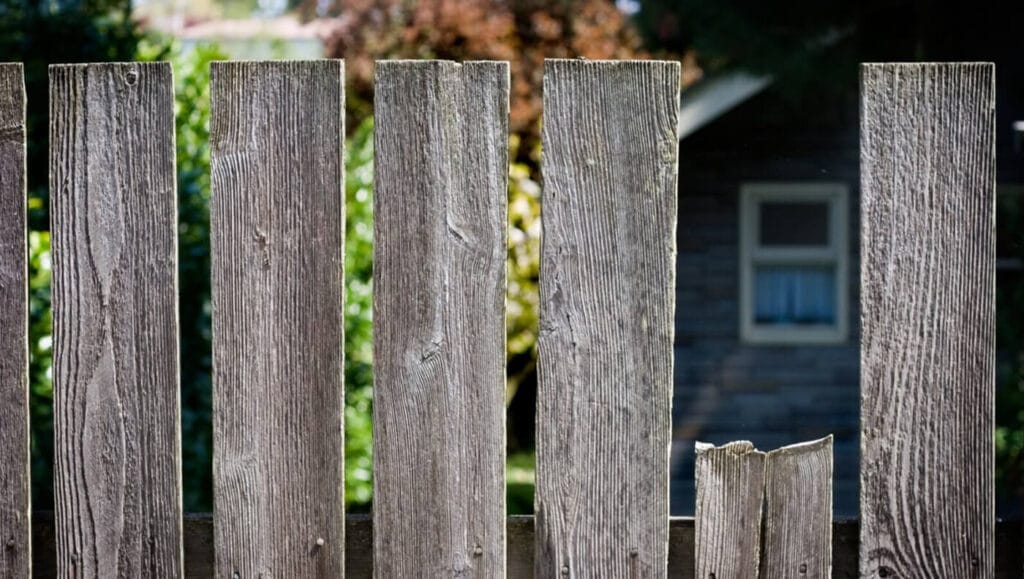Grey fences can quickly make your home look drab, dated, and dingy. However, for many homeowners, the source of the greyness is a mystery. Luckily, we’ve encountered this question before and not only know the answer, but can also provide methods to prevent your fence from turning grey, and ways to correct the color. Let’s dive in!
1. You Have a Cedar Fence
Many household wood fences are constructed with cedar wood because of its durability and it can easily outstand the conditions nature throws at it. In addition, cedarwood also boasts natural oils that deter insects and rot; both of these qualities help ensure your investment lasts longer than fences created with softer wood variations.
The downside to cedar wood is that as it ages it naturally turns grey. If the entirety of your fence is grey, it’s likely an aged cedar fence.
2. Your Sprinklers are Hitting It
Another cause of your fence turning grey may be excess moisture and the culprit is usually your sprinkler system. Not only can cyclical moisture and dryness lead to a grey coloring, but also minerals within the water can tint your fence a grey or white color.
While it’s important to double-check that your sprinkler system is in working order, in all reality, your fence is going to come into contact with moisture and that will be impossible to prevent.
3. It’s Been Exposed to the Sun
Another cause to fence greying that is difficult to prevent is sun exposure. As with anything that’s left is the sun for a long period of time, your fence will start to lose its color as it’s bleached. Like with the greyness that forms on a cedar fence from age, if the sun is the cause of your fence turning grey, the greyness will likely be over the majority of your fence.
How to Prevent and Treat Fence Greying?
No matter what the cause of your fence greying, there is a one-size-fits-all solution to all the causes: fence staining. If you’re looking to prevent your fence from turning grey, be sure to stain your fence as soon as it’s installed. If your fence is already experiencing a grey haze, it will need a good cleaning with a power-washer, and then a stain to bring vibrance back to the wood.
Not only does fence staining revive the color of your wood planks, but it also protects it from the sun, water, and weather. Keep in mind that you will need to reapply a fence stain every few years and depending on the condition of your fence, it may not be the panacea your fence needs.
Curious if a fence stain will resolve your issues? Contact our experts at Sierra Fence for a consultation today!
